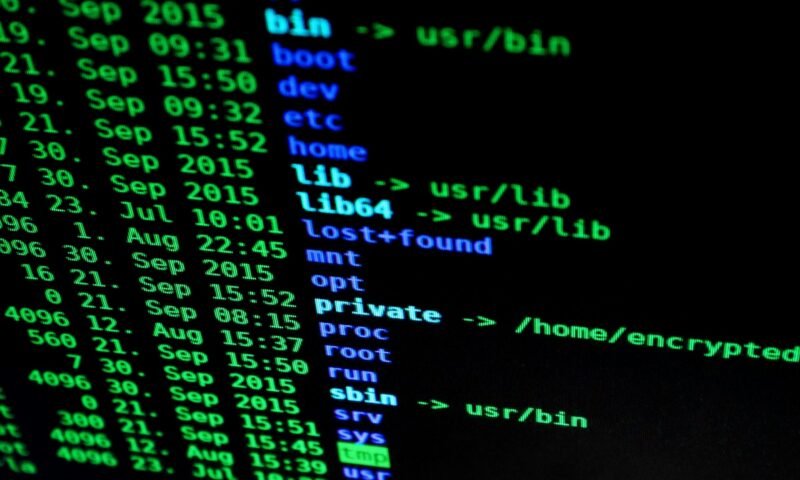
Die Dynamik der Cybersicherheit hat sich im Jahr 2025 grundlegend geändert. Künstliche Intelligenz revolutioniert zwar nicht die Geschäftstätigkeit, trägt aber dazu bei, die Online-Kriminalität in einem noch nie dagewesenen Ausmaß einzudämmen. Jüngsten Untersuchungen zufolge waren im vergangenen Jahr 87 % der Organisationen weltweit von KI-Angriffen betroffen. Traditionelle Sicherheitsmaßnahmen erweisen sich jedoch zunehmend als unzureichend gegen diese fortschrittlichen Bedrohungen.
Die finanziellen Risiken waren noch nie so groß, denn die Kosten der elektronischen Kriminalität dürften bis 2025 jährlich 10,5 Billionen US-Dollar erreichen. Für Unternehmen jeder Größe ist die Bedrohung real und unmittelbar.
Dieser umfassende Leitfaden zeigt, wie KI Cyberbedrohungen transformiert, warum herkömmliche Sicherheitsmaßnahmen versagen und – was am wichtigsten ist – wie Sie Ihre Arbeit und Ihr Vermögen durch strategische Verteidigungsplanung und fortschrittliche Schutztools vor diesen fortschrittlichen Angriffen schützen können.
Warum die elektronischen Angriffe der KI anders sind
Traditionelle Cybersicherheit konzentriert sich auf die Bekämpfung menschlicher Angreifer, die über menschliche Einschränkungen verfügen. Diese Angreifer können sich jeweils nur auf ein Ziel konzentrieren, machen Vorhersagefehler und folgen Mustern, die Sicherheitssysteme erlernen können. Künstliche Intelligenz hat diese Annahmen vollständig zerstört.
Moderne Angriffe, die mit der gleichen Amnesty International durchgeführt werden, basieren nicht nur auf maschineller, sondern auch auf menschlicher Kreativität. Ein künstliches Intelligenzsystem kann Tausende von Organisationen gleichzeitig angreifen, aus jedem Echtzeitangriff lernen und seine Strategien schneller anpassen, als menschliche Verteidiger reagieren können. Dies ist nicht nur eine Weiterentwicklung der Cyberkriminalität, es ist eine komplette Revolution.
Jeder kann jetzt fortgeschrittene Angriffe starten
Die vielleicht gefährlichste Veränderung besteht darin, dass künstliche Intelligenz fortgeschrittene Angriffe für gewöhnliche Kriminelle zugänglich gemacht hat. Zuvor waren für die Durchführung solcher Angriffe komplexe elektronische Operationen erforderlich:
- Fortgeschrittene technische Fähigkeiten wurden über Jahre hinweg entwickelt
- Große finanzielle Mittel für Werkzeuge und Infrastruktur
- Tiefgreifende Kenntnisse über Zielsysteme und Schwachstellen
- Koordination mehrerer Spezialisten
Heutzutage können diese komplexen Vorgänge mithilfe künstlicher Intelligenz automatisiert werden. Ein Krimineller mit grundlegenden Computerkenntnissen kann nun Angriffe starten, die zuvor nur Akteuren auf nationaler Ebene oder hochgradig organisierten Verbrecherverbänden möglich waren.
Angriffsmechanismen künstlicher Intelligenz: Wie Kriminelle eine Technologiewaffe herstellen
Mit der Einführung künstlicher Intelligenz erlebte Social Engineering einen völligen Wandel. Traditionelles Social Engineering basierte auf menschlicher Intuition, Grundlagenforschung und einem allgemeinen Ansatz, der nur bei einem kleinen Prozentsatz der Ziele funktionierte. Künstliche Intelligenz revolutionierte dies, indem sie die kollektive Verteilung von Social-Engineering-Angriffen in einem Ausmaß und auf einem Entwicklungsniveau ermöglichte, das zuvor nicht möglich war.
Moderne Systeme der künstlichen Intelligenz können Tausende von Datenpunkten zu potenziellen Zielen in Social-Media-Profilen, beruflichen Netzwerken, öffentlichen Aufzeichnungen und Verhaltensmustern analysieren. Diese Analyse erstellt detaillierte psychologische Profile, die sehr gezielte Manipulationsstrategien vermitteln. Künstliche Intelligenz kennt zwar nicht Ihren Namen und Beruf, versteht aber Ihre Kommunikationsmethoden, potenzielle Schwächen, berufliche Beziehungen und Entscheidungsmuster.
Die Auswirkungen elektronischer Angriffe durch KI auf den Wohlstand
1. Finanzielle Verluste
Unternehmen können durch Betrug, Lösegeldzahlungen oder den Diebstahl von Finanzdaten direkt finanzielle Schäden erleiden. Diese Kosten können Start-ups lähmen und bestehende Institutionen schwächen. Das Ausmaß der finanziellen Verluste nimmt zu, da künstliche Intelligenz sehr überzeugende Betrugsversuche ermöglicht, die über traditionelle Offenlegungssysteme hinausgehen. Dies kann nicht nur die Betriebseinnahmen, sondern auch die langfristige finanzielle Stabilität beeinträchtigen.
2. Reputationsschaden
Wenn Unternehmen Opfer elektronischer KI-Angriffe werden, erschüttert das Vertrauen von Kunden und Investoren schnell. Der Reputationsschaden mindert oft die Kundentreue und erschwert die Gewinnung neuer Partnerschaften. Die Kosten für die Wiederherstellung des Markenvertrauens können in vielen Fällen den unmittelbaren finanziellen Verlust des Angriffs selbst übersteigen.
3. Verschiedene Daten und Diebstahl geistigen Eigentums
KI-Angriffe zielen auf sensible Datenbanken ab und legen persönliche Daten, Geschäftsgeheimnisse oder Finanzunterlagen offen. Diese Verstöße können zu Bußgeldern, Gerichtsverfahren und Wettbewerbsnachteilen führen, wenn die gestohlenen Daten angeboten werden. Für Unternehmen in innovativen Branchen kann der Verlust geistigen Eigentums eine direkte Bedrohung für Gewinne und zukünftiges Wachstum darstellen.
4. Verlagerte Arbeit und Störungen
Ransomware-Programme und KI-gestützte Angriffe können vollständig zum Stillstand kommen. Die Unterbrechungszeit führt zu entgangenen Umsatzchancen, Kundenkontrollen und erhöhten Wiederherstellungskosten. In anspruchsvollen Branchen können bereits wenige Stunden Turbulenzen zu erheblichen finanziellen Rückschlägen führen.
5. Erhöhen Sie die Kosten für Sicherheit und Versicherung
Der Online-Versicherungsmarkt befindet sich in einer Krise, die direkt mit der Entwicklung von Angriffen durch künstliche Intelligenz zusammenhängt. Versicherungsunternehmen bauten ihre Risikomodelle auf historischen Daten zu elektronischen Angriffen auf, die prädiktiven Mustern folgten. Angriffe durch künstliche Intelligenz haben diese Modelle größtenteils zerstört, was es nahezu unmöglich macht, Online-Versicherungsumfragen präzise zu bewerten.
So schützen Sie Ihre Arbeit vor elektronischen Angriffen Amnesty International
1. Investieren Sie in Sicherheitstools mit künstlicher Intelligenz
Profitieren Sie von Cybersicherheitslösungen, die auf automatischem Lernen basieren und ungewöhnliche Fälle schneller erkennen als herkömmliche Systeme. Diese Tools lernen ständig aus neuen Angriffsmustern und helfen Ihnen, den Bedrohungen durch künstliche Intelligenz immer einen Schritt voraus zu sein.
2. Sicherheit der Remote-Arbeit mit VPN
VPN verschlüsselt den Datenverkehr im InternetSchützen Sie sensible Daten vor Einwänden, insbesondere wenn Mitarbeiter remote arbeiten. Dies ist besonders wichtig für Finanz-, Gesundheits- oder Rechtsunternehmen, die täglich mit Kundeninformationen umgehen.
3. Schulung der Mitarbeiter und Sensibilisierung
Mitarbeiter sind oft das schwächste Glied. Regelmäßige Schulungen reduzieren das Risiko von Hackern, Social Engineering und Betrug durch künstliche Intelligenz. Zu den Angriffsmethoden gehören Simulationen und Sensibilisierungskampagnen, mit denen Mitarbeiter verdächtige Aktivitäten schnell erkennen können, bevor Schaden entsteht.
4. Strenge Kontrolle der Ankunft und Genehmigung
Implementierung von MFA (Multi-Faktor-Authentifizierung) und strikte Rollenverteilung reduzieren die Angriffsfläche. Dies reduziert den unbefugten Zugriff auf sensible Daten und stellt sicher, dass nur verifizierte Personen mit kritischen Systemen arbeiten.
5. Notfall-Backup- und Wiederherstellungspläne
Regelmäßige Backups und bewährte Wiederherstellungsprotokolle stellen sicher, dass Unternehmen wichtige Daten nach einem Angriff schnell wiederherstellen können. Die Speicherung von Backups außerhalb des Unternehmens oder in der Cloud sorgt für zusätzliche Flexibilität und verhindert so den vollständigen Datenverlust bei elektronischen Unfällen.
6. Sicherung Ihrer Organisation: die grundlegende Netzwerkhygiene
Bevor Sie in fortschrittliche KI-basierte Abwehrmaßnahmen investieren, stellen Sie sicher, dass die Sicherheit Ihres Hauptnetzwerks einwandfrei ist. Dies beginnt mit der Änderung der Standardkennwörter auf allen Geräten, insbesondere Ihrem WLAN-Router, durch ein sicheres und einzigartiges Passwort. Viele Sicherheitsverletzungen entstehen durch ein vernachlässigtes Router-Passwort, das leicht zu erraten ist. Sie können dies Schritt für Schritt befolgen Informationen zum Ändern des WLAN-Passworts, um diesen kritischen Einstiegspunkt zu sichern.
7. Zusammenarbeit mit Cybersicherheitsexperten
Durch die Beschäftigung oder Nutzung externer Cybersicherheitsspezialisten stellen Sie sicher, dass Ihre Abwehrmaßnahmen den neuesten Bedrohungen durch künstliche Intelligenz standhalten. Experten können außerdem Hacking-Tests durchführen und Konten überprüfen, um versteckte Schwachstellen zu erkennen, bevor Angreifer sie ausnutzen.
Abschluss:
Diese Erkenntnisse zeigen, dass ein wirksamer Schutz möglich und praktikabel ist. Durch die Implementierung umfassender Verteidigungsstrategien, die fortschrittlichen VPN-Schutz, wirksame Sicherheitssysteme und Mitarbeiterschulungen umfassen, können Institutionen Angriffe durch künstliche Intelligenz deutlich reduzieren und gleichzeitig ihre Betriebseffizienz und Wettbewerbsvorteile aufrechterhalten.
Die wichtigste Erkenntnis ist, dass der Schutz vor Angriffen durch künstliche Intelligenz die Arbeit von Amnesty International erfordert. So wie Kriminelle künstliche Intelligenz nutzen, um ihre Fähigkeiten zu verbessern, müssen Unternehmen ebenso fortschrittliche Verteidigungstechnologien einsetzen. Dabei geht es nicht nur darum, mit den Bedrohungen Schritt zu halten, sondern ihnen durch proaktive, intelligente und umfassende Sicherheitsstrategien immer einen Schritt voraus zu sein.
Häufige Fragen:
Wie unterscheiden sich elektronische Angriffe durch KI von herkömmlichen elektronischen Angriffen?
Angriffe auf Basis künstlicher Intelligenz funktionieren unabhängig von der Geschwindigkeit und Größe der Maschine und können Tausende von Organisationen gleichzeitig angreifen, ihre Strategien in Echtzeit anpassen und aus Fehlern lernen, um die Erfolgsquote zu verbessern.
Was macht kleine Unternehmen zu attraktiven Zielen für Angriffe auf künstliche Intelligenz?
Kleine Unternehmen kombinieren wertvolle Daten mit begrenzten Sicherheitsressourcen, was sie zu Zielen mit hoher Nutzung macht. Sie verfügen in der Regel über Budgets für den Cyberspace von 3.000 bis $ 8.000 pro Monat und es fehlt ihnen an übermäßigem IT-Sicherheitspersonal, sie verwenden veraltete Systeme und verfügen nur über minimale Mitarbeiterschulungen.
Warum sind herkömmliche Sicherheitsmaßnahmen gegen Angriffe durch künstliche Intelligenz nicht wirksam?
Herkömmliche Sicherheitssysteme basieren auf der Erkennung bekannter Angriffsmuster und -signaturen. Angriffe mit künstlicher Intelligenz sind speziell darauf ausgelegt, diese Erkennung zu umgehen. Sie simulieren legales Benutzerverhalten, verwenden saubere Schadprogramme ohne bekannte Signaturen und passen sich bei der Begegnung mit Sicherheitsmaßnahmen an.




